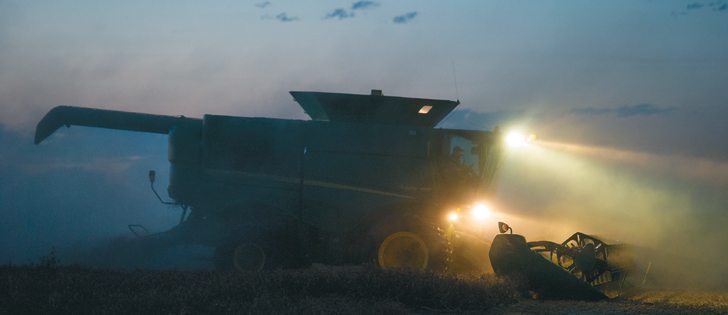Provincial crop reports suggest Statistics Canada will increase yields when it releases its next production estimate Dec. 4.
The latest yield estimates from agriculture departments in Manitoba, Saskatchewan and Alberta are higher for most of the major crops than those contained in Statistics Canada’s Oct. 2 report.
The trade has already adjusted prices to reflect the better than expected harvest.
The differences are most stark in Manitoba, where provincial crop reporters expect a lot more bushels than Statistics Canada.
The province’s canola estimate was six bushels per acre higher, spring wheat seven, barley eight and oats 18.
Read Also

Russian wheat exports start to pick up the pace
Russia has had a slow start for its 2025-26 wheat export program, but the pace is starting to pick up and that is a bearish factor for prices.
Saskatchewan crop reporter yield estimates are generally one to three bu. per acre higher than Statistics Canada’s most recent estimates.
In Alberta, it is hit and miss. Canola, oats and peas are up one to three bu. per acre, and spring wheat, barley and durum are down by the same amount.
Using provincial crop report yields and Statistics Canada’s harvested acreage estimates would result in an additional:
- 1.54 million tonnes canola
- 260,000 tonnes durum
- 180,000 tonnes peas,
- 174,000 tonnes oats
- 160,000 tonnes soybeans
- 116,000 tonnes spring wheat
- 103,000 tonnes flax
Jon Driedger, senior market analyst with FarmLink Marketing Solutions, is using yields similar to what is contained in the provincial crop reports based on conversations he has had with the company’s 25 grain marketing advisers in Western Canada.
Canola yields in particular shocked a lot of growers.
“People are just astounded at how resilient that crop is,” he said.
“It looked crappy early on and it did just incredibly well, given the limited rainfall it had for so much of the year.”
John Duvenaud, an analyst with Wild Oats Grain Market Advisory, is also leaning toward the crop report yield estimates.
“Crops in Manitoba were fabulous. I’ve never seen such good crops,” he said.
“All kinds of guys are telling me they’re getting 50 bu. plus canola, so I would believe those higher numbers.”
Duvenaud said it’s one of those years when a big crop keeps getting bigger in Canada and the United States because of improved genetics and agronomic practices, such as fertility and weed control.
“These farmers, you think they’re perfect but they keep getting better,” he said.
Using provincial crop report yields would result in a 15.8 million tonne canola crop, the second biggest in Canadian history and 2.5 million tonnes larger than Statistics Canada’s initial estimate re-leased Aug. 21.
At least one grain industry analyst believes the crop will end up that big. Larry Weber’s estimate would have been higher than 16 million tonnes if it hadn’t been for strong winds during the October long weekend.
Driedger said most of the trade is using a production number that starts with 15 but would not be as high as 15.8 million.
“There has been a pretty consistent trend of StatsCan just underestimating crops and then having these upward revisions, sometimes a year or two after the fact.”
Other crops would also get bigger but not as dramatically as canola. It would result in:
- 19.17 million tonnes of spring wheat
- 7.59 million tonnes of barley
- five million tonnes of durum
- 3.47 million tonnes of oats
- 3.51 million tonnes of peas
- 2.25 million tonnes of lentils
Driedger does not have a problem with those numbers, although his barley and oat production estimates are a little lower because he believes growers used some of those crops as silage or green feed due to a shortage of forage crops and high hay prices.
He believes the market has already factored in higher yields and bigger production numbers.
“I think everybody is already there for the most part.”
Contact sean.pratt@producer.com
















